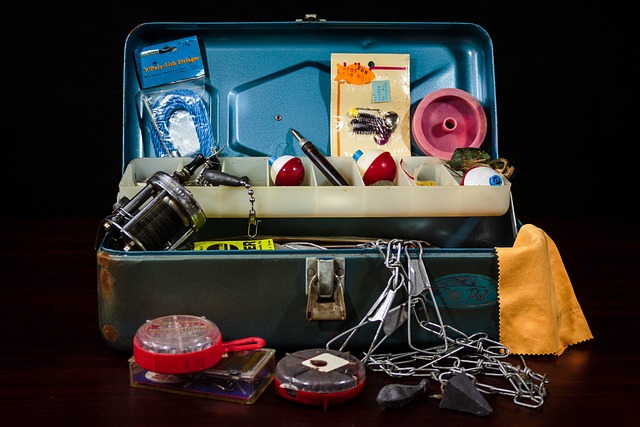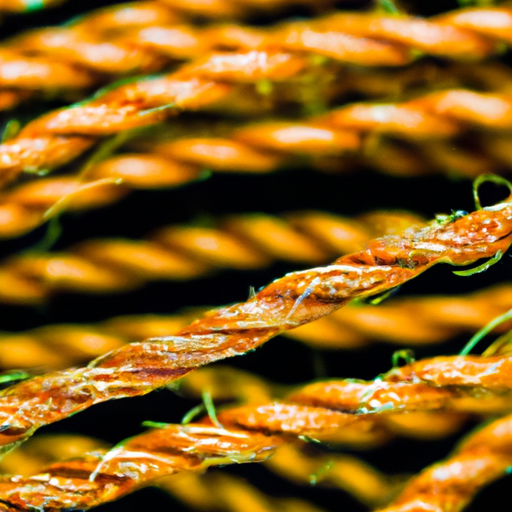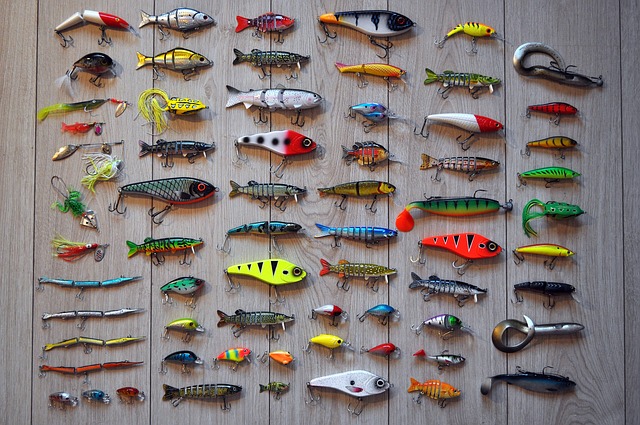Have you ever wondered why choosing the right fishing gear is so important? Well, one crucial aspect of fishing gear that often gets overlooked is the type of fishing line you use. In particular, braided lines have gained popularity among anglers for their durability and strength. But with so many options available, how do you know which braided line is right for you? In this article, we’ll dive deep into the world of braided lines and explore the factors you should consider when making your decision. So, if you’re interested in learning more about choosing the perfect fishing gear, keep reading!
When it comes to fishing gear and equipment, the fishing line is like the lifeline between you and the fish. It’s what connects your bait or lure to your fishing rod and reel, and ultimately, determines whether you’ll have a successful catch or not. While there are various types of fishing lines available, such as monofilament and fluorocarbon, braided lines have gained popularity in recent years due to their impressive strength and durability. But what exactly is a braided line? Well, as the name suggests, it’s made by braiding together several strands of fiber, usually Spectra or Dyneema. This unique construction gives braided lines their incredible strength and resistance to abrasion. In addition to being strong, braided lines also have a smaller diameter compared to other types of fishing lines, allowing you to cast further and feel even the slightest nibble on your bait. If you want to learn more about the benefits of braided lines and how to choose the right one for your fishing adventures, continue reading our informative article.
Choosing the Right Fishing Gear: A Guide to Braided Lines
1. Understanding the Importance of Fishing Gear
1.1 Fishing Gear and Equipment: An Overview
Fishing is not just a hobby; it’s a lifestyle for many enthusiasts. To ensure a successful and enjoyable fishing experience, it’s crucial to have the right gear and equipment. From rods to reels, lures to lines, every piece of gear plays a significant role in your fishing adventure.
1.2 The Significance of Choosing the Right Fishing Gear
Choosing the right fishing gear is essential for several reasons. Firstly, it enhances your chances of catching fish. Different fishing techniques require specific gear, and using the correct equipment increases your chances of success. Secondly, the right fishing gear ensures the safety and well-being of both the angler and the fish. Properly chosen gear minimizes the risk of injury to both parties.

This image is property of pixabay.com.
2. Introduction to Braided Fishing Lines
2.1 Exploring Different Types of Fishing Lines
When it comes to fishing lines, there are several options available in the market. Monofilament, fluorocarbon, and braided lines are some of the most commonly used. Each type has its characteristics and advantages, but in this guide, we will focus on braided lines.
2.2 Understanding the Advantages of Braided Lines
Braided lines have gained popularity among anglers for various reasons. Firstly, they have a high strength-to-diameter ratio, which means you can use a thinner line without compromising strength. This feature allows for greater casting distance and better lure control. Secondly, braided lines have little to no stretch, providing anglers with enhanced sensitivity and better hook sets. Lastly, they have excellent abrasion resistance, making them more durable and suitable for fishing in rugged environments.
3. Factors to Consider When Choosing Fishing Lines
3.1 Strength and Durability
The strength and durability of fishing lines are crucial considerations. Different fishing techniques require specific pound test ratings, which indicate the maximum load the line can handle. It’s essential to choose a line with appropriate strength to handle the targeted fish species and fishing conditions. Additionally, the durability of the line ensures its longevity and reduces the need for frequent line replacements.
3.2 Sensitivity and Line Visibility
Sensitivity refers to the ability of the line to transmit even the slightest movements or bites to the angler. Braided lines excel in sensitivity as they have minimal stretch. Line visibility is also a factor to consider, especially in clear water conditions. Braided lines can be highly visible, which can be advantageous for line watching but may also spook more cautious fish.
3.3 Water Conditions and Targeted Fish Species
The fishing environment and targeted fish species play a significant role in selecting the right fishing line. Different water conditions, such as saltwater or freshwater, may require different line properties. Additionally, some fish species have sharp teeth or strong pulling power, which necessitates a line with higher abrasion resistance and strength.
3.4 Cost and Longevity
The cost and longevity of fishing lines are important factors, especially for regular anglers. While braided lines may be initially more expensive than other types, their durability and longer lifespan justify the investment. It’s essential to weigh the cost against the expected longevity to make an informed decision.

This image is property of pixabay.com.
4. Pros and Cons of Braided Lines
4.1 Benefits of Using Braided Lines
Braided lines offer several advantages for anglers. Firstly, their high strength-to-diameter ratio allows for increased casting distance and better control over lures. Secondly, their minimal stretch enhances sensitivity, allowing anglers to detect even the slightest bites. Additionally, their low memory and high abrasion resistance make them suitable for fishing in rough conditions.
4.2 Drawbacks of Braided Lines
Despite their numerous benefits, braided lines have a few drawbacks as well. Their high visibility in clear water may spook some fish, making them less suitable for certain fishing scenarios. Moreover, their lack of stretch can result in more direct pressure on the hook, potentially leading to hook pulls or fish escaping.
5. Choosing the Right Pound Test
5.1 Understanding Pound Test Rating
Pound test rating, often referred to as line strength, is a critical factor when choosing fishing lines. It indicates the maximum load the line can handle before breaking. The appropriate pound test depends on the targeted fish species and the fishing technique used. It’s important to consider the fish’s size and strength to ensure the line can handle the fight.
5.2 Matching Pound Test to Targeted Fish Species and Fishing Techniques
Different fish species require different pound test ratings. Smaller species, such as trout or panfish, can be effectively targeted with lower pound test lines, while larger species like bass or salmon may require heavier lines. Additionally, different fishing techniques, such as trolling or bottom fishing, may require different pound test ratings. Matching the pound test to the targeted fish species and fishing technique is crucial for optimal results.

This image is property of pixabay.com.
6. Selecting the Appropriate Diameter
6.1 The Relationship between Line Diameter and Performance
The diameter of the fishing line plays a significant role in its performance. Thinner lines offer better casting distance and lure control due to their reduced wind resistance. They also provide increased sensitivity as they have less stretch. However, thinner lines may have lower abrasion resistance and may be more visible in the water.
6.2 Considerations for Different Fishing Applications
Different fishing applications require different line diameters. For finesse fishing or situations where visibility is critical, thinner lines are recommended. On the other hand, when fishing in rugged environments or targeting larger species with sharp teeth, a thicker line with higher abrasion resistance is preferable. Understanding the specific fishing application will guide the selection of the appropriate line diameter.
7. Evaluating the Abrasion Resistance
7.1 Determining the Level of Abrasion Resistance
Abrasion resistance is an essential factor to consider, especially when fishing in rocky or rough terrains. Braided lines are generally known for their high abrasion resistance, making them suitable for such conditions. However, it’s important to evaluate the specific braided line’s abrasion resistance properties and choose one that best fits the fishing scenario.
7.2 Impact of Abrasion Resistance on Fishing Success
A line with high abrasion resistance increases the chances of landing fish successfully. It reduces the risk of the line breaking when rubbed against rocks, reefs, or other underwater obstacles. By choosing a braided line with excellent abrasion resistance, anglers can fish confidently and focus on the technique rather than worrying about potential line failures.

8. Knot Strength and Compatibility
8.1 Understanding Different Knots for Braided Lines
Choosing the right knot for braided lines is crucial to ensure maximum strength and reliability. Unlike monofilament lines, braided lines require specific knots that can securely hold them in place. Popular knots for braided lines include the Palomar knot, Improved Clinch knot, and Uni knot. Understanding and practicing these knots will enhance your fishing experience.
8.2 Testing Knot Strength for Reliability
To ensure the reliability of the knots tied with braided lines, it’s important to test their strength. Practice tying the knots and test them under tension to evaluate their performance. Regularly check the knots during fishing sessions to identify any signs of weakness or slippage. Checking and retying knots when necessary will increase the overall reliability of your gear.
9. Additional Features and Coatings
9.1 Exploring Added Features of Braided Lines
Braided lines often come with additional features or coatings that enhance their performance. Some lines have added UV resistance, which prolongs their lifespan when exposed to sunlight. Others may have increased color retention or low visibility coatings to suit different fishing conditions. Exploring these added features and coatings can help you choose a braided line that best suits your fishing requirements.
9.2 Evaluation of Specialized Coatings
Some braided lines may come with specialized coatings that offer benefits like reduced fraying or improved casting distance. These coatings can enhance the overall performance and longevity of the line. Evaluating the effectiveness of these specialized coatings and understanding their impact on your fishing technique and environment will guide you in selecting the most suitable line.

10. Conclusion
10.1 Recap of Key Considerations
Choosing the right fishing gear is vital for a successful and enjoyable fishing experience. When it comes to selecting fishing lines, braided lines offer several advantages such as strength, sensitivity, and abrasion resistance. However, it’s essential to consider factors like pound test rating, line diameter, and abrasion resistance to make an informed decision.
10.2 Making an Informed Decision
By understanding the different characteristics and advantages of braided lines, you can choose the most suitable line for your fishing needs. Consider the targeted fish species, fishing techniques, and environmental conditions to determine the appropriate pound test, diameter, and abrasion resistance. Additionally, evaluate the compatibility of knots and explore any added features or coatings that can further enhance the performance and longevity of the line.
Remember that selecting the right fishing gear, including braided lines, is a continuous learning process. Experimenting with different options and staying updated with the latest advancements in fishing gear technology will allow you to make the most informed decisions and maximize your fishing success. So, grab your gear, hit the water, and enjoy the thrilling experience of fishing with the right tools!
